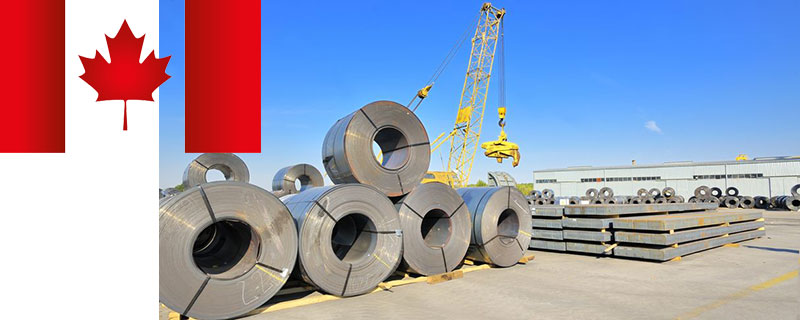What the Tariffs Mean for Canadian Construction
U.S. President Donald Trump has threatened a variety of tariffs on products coming into the U.S. from Canada, including steel and aluminum, which has led Canada to devise a list of counter-tariffs. (Andrew Caballero-Reynolds/AFP/Getty Images)
The cost of many construction-related products now seen as vulnerable to higher prices include everything from windows to shingles; cement; certain types of flooring; even bathroom and kitchen appliances coming from the U.S.
All are listed in the Canadian government’s proposed tariff list from early February.
Experts say threats of retaliatory tariffs are complicating the national promise to build more homes.
“With material costs now increasing, a lot of projects may just be shelved. I’ve already heard about projects for new housing being shelved just because of the uncertainty,” said Michael Brooks, CEO of the Real Property Association of Canada (Realpac).
“We’re already behind in catching up on supply. This will make it worse.”
‘We see greater uncertainty because of the tariffs’
Canadian Housing Minister Nathaniel Erskine-Smith echoed this fear last week.
“Building more homes and retaliating with tariffs are at odds with one another, because as we see greater uncertainty because of the tariffs, as we see cost increases on certain materials, prices of homebuilding are going to go up. And we need the exact opposite to happen,” Erskine-Smith said.
“I’m alive to the concern. The government is alive to the concern. The list of retaliatory measures is alive to that concern,” he said.
Brooks, who represents some of Canada’s largest landlords and developers, says there is concern and hesitation across the industry.
“It is fear of the unknown,” Brooks said.
He says you can’t plan a project without a budget, which is usually done down to “the last nut and bolt.” It’s an impossible task at the moment.
“We have no idea where [items being listed for tariffs] would stop, anything that is in high demand going into home construction — cement, rebar, things like that. If there are tariffs that are hitting those, it’s just going to continue to drive the costs up,” said Scott Andison, CEO of the Ontario Home Builders’ Association.
Andison says if this threat goes on for too long, builders will have to stop projects until costs become more certain.
Tariffed twice, or more
Another concern from industry is the fear of layered tariffs. Canada and the U.S. supply chains are so integrated that many supplies — including products made with steel and aluminum — will go back and forth between the two countries several times before becoming a finished product.
According to a recent RBC report, Canada imported $7.5 billion US in steel and $9.4 billion in aluminum products in 2024. Canada accounts for about a fifth of U.S. imports of steel and 50 per cent of aluminum imports.
Loomis likened construction material to the automobile industry’s cross-border workflow.
“We hear about how a part will cross the border, you know, eight times before it ends up in a finished product,” he said.
“That’s fairly similar when it comes to the structural steel industry as well. We have a lot of fabricators that do work in the United States. They will source their wide flange, or I-beam, from the United States, then fabricate it here in Canada, and then ship it back to the U.S.,” Loomis said.
Brooks said something like an HVAC unit or an appliance might have Canadian steel, but could be assembled in the U.S. and then brought back to Canada. These are just two examples of products with the potential to skyrocket in cost.
These issues have a wider effect in a country where investors play such a key role in development.
“That loss of confidence, that last of foreseeability [is challenging],” said Brooks. “And it’s possibly going to drive investment capital elsewhere — elsewhere being outside of Canada.”
Why not just buy Canadian?
Loomis says buying Canadian isn’t always easy.
“We’ve been part of a trade regime for many years, and we all have our niche. Canada doesn’t make everything we need and the U.S is in the exact same situation,” Loomis said.
He said it would take “several years and billions of dollars” in investment to rejig manufacturing plants to build all that we need.
Brooks believes there is a lot the government could do to keep Canadian developers building, including “getting rid of interprovincial trade barriers, lowering development charges [and] removing GST on purpose-built rental.”
He argues the government can get rid of some of these added costs if it wants to calm investors during this time.
Even so, the uncertainty with what might happen between Canada and the U.S. will remain a deterrent for home builders.
“It’s really hard to have confidence with anything that comes from south of the border right now,” Brooks said.
Source: Yahoo News







Leave a Reply
Want to join the discussion?Feel free to contribute!